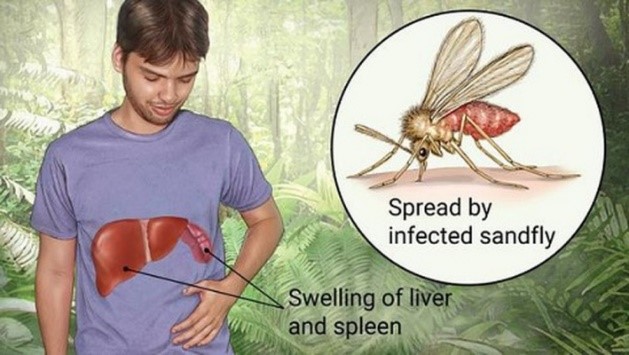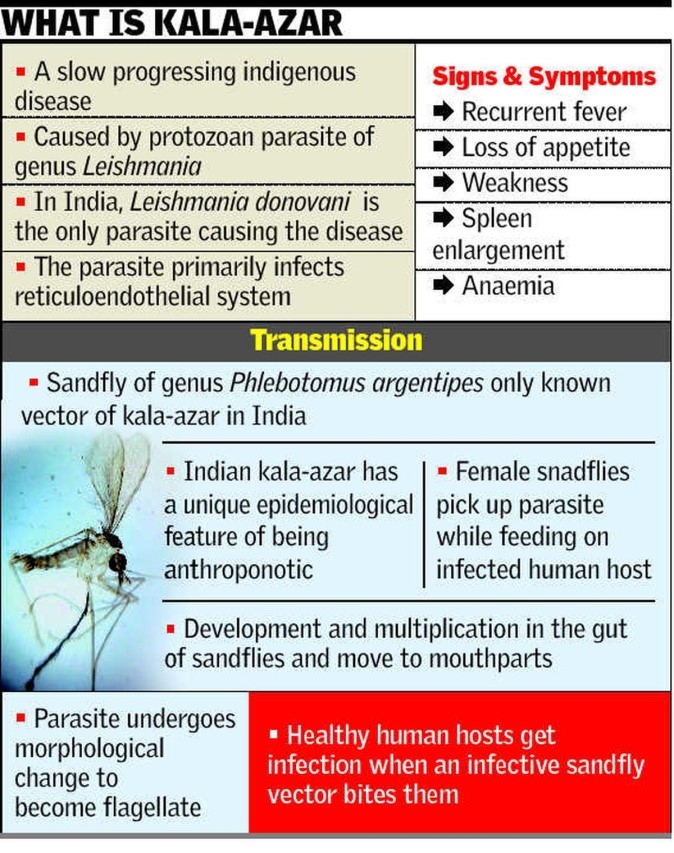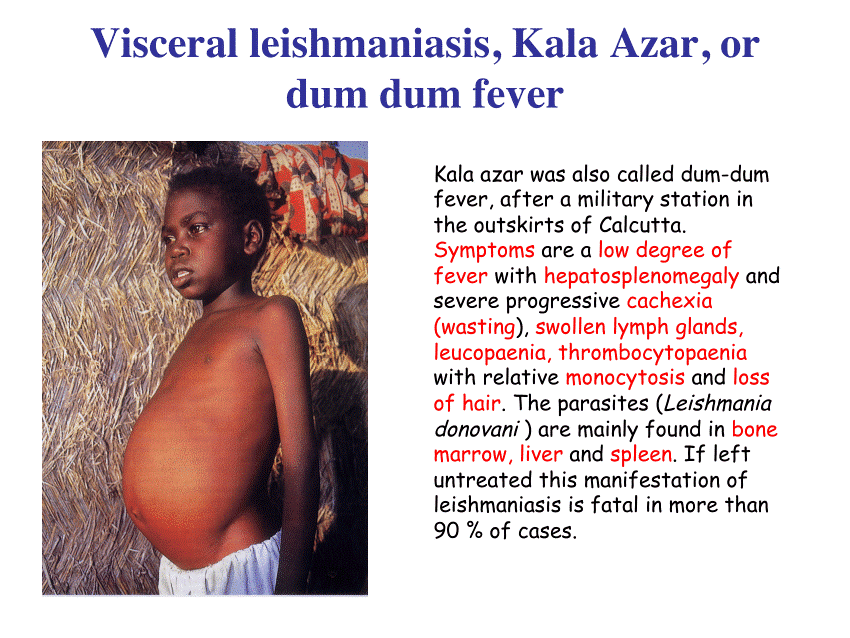Description

Disclaimer: Copyright infringement not intended.
Context
- The Prime Minister, Shri Narendra Modi has expressed his happiness on the declining cases of Kala Azar disease.
What is kala-azar or black fever disease?
- Kala-azar or Visceral Leishmaniasis is a protozoan parasitic disease, spread by sandfly bites. The flies are infected with the parasite called ‘leishmania donovani’.

Sandflies
- Sandflies are brown in color and have hairs on their bodies. The vector sandfly is known to live in cracks and crevices of muddy houses, especially in dark and humid corners.
Vulnerable population
- The disease affects some of the poorest people and is linked to malnutrition, population displacement, poor housing, a weak immune system and a lack of financial resources. Leishmaniasis is also linked to environmental changes such as deforestation, and urbanization. The disease is endemic in Bihar, Jharkhand, Uttar Pradesh and West Bengal.
.jpeg)
Symptoms of kala-azar
- Irregular bouts of fever over many days, weight loss, enlargement of the spleen and liver, and anemia are known symptoms. The skin may become dry, thin and scaly in patches and hair may be lost.
- In people with a light skin tone, grayish discoloration of the skin of hands, feet, abdomen and face may be seen, that is why the disease is also called “Black fever”.

Treatment
- Anti-leishmanial medicines are available for treatment. Vector control is also recommended by the WHO, which means reducing or interrupting the transmission of disease by decreasing the number of sandflies in surroundings through insecticide spray, use of insecticide-treated nets, etc.
Steps being taken
- The government aimed to eliminate the disease in India by 2015, but that deadline was missed. However, the number of cases has been brought down significantly through the National Kala-Azar Elimination Programme.
- Under this program, medicines, insecticides and technical support were given by the central government, while state governments provided for the costs involved in implementation. The program was implemented through State/District Malaria Control Offices and the primary health care system.
.jpeg)
https://pib.gov.in/PressReleaseIframePage.aspx?PRID=1889190


















